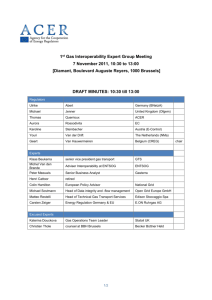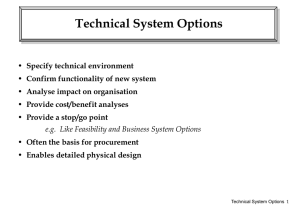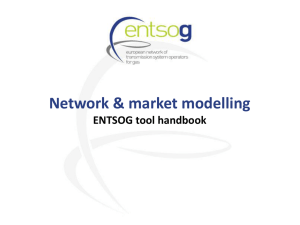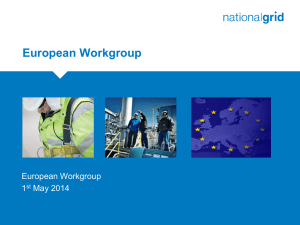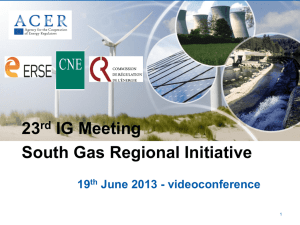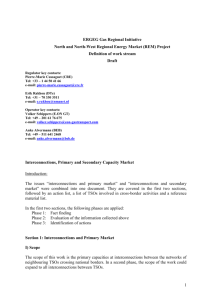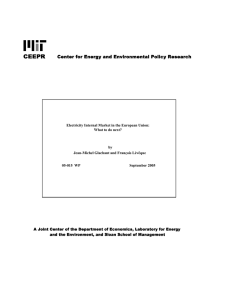E11-INT-11-04_Draft_Minutes 21122012 fin
advertisement
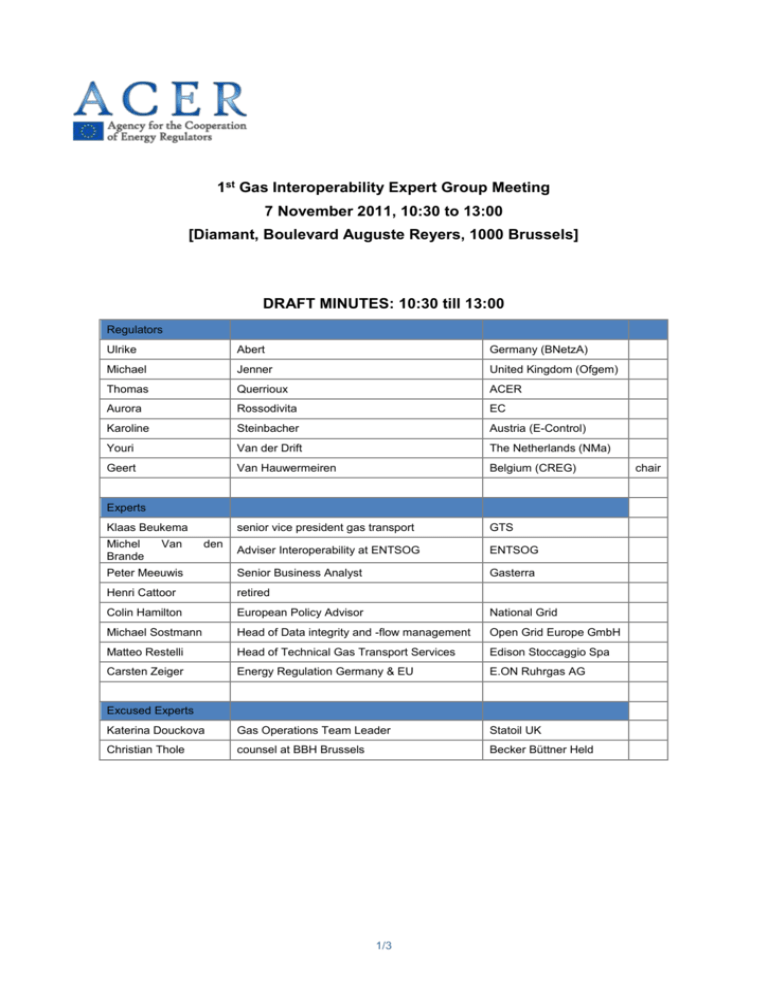
1st Gas Interoperability Expert Group Meeting 7 November 2011, 10:30 to 13:00 [Diamant, Boulevard Auguste Reyers, 1000 Brussels] DRAFT MINUTES: 10:30 till 13:00 Regulators Ulrike Abert Germany (BNetzA) Michael Jenner United Kingdom (Ofgem) Thomas Querrioux ACER Aurora Rossodivita EC Karoline Steinbacher Austria (E-Control) Youri Van der Drift The Netherlands (NMa) Geert Van Hauwermeiren Belgium (CREG) senior vice president gas transport GTS Adviser Interoperability at ENTSOG ENTSOG Peter Meeuwis Senior Business Analyst Gasterra Henri Cattoor retired Colin Hamilton European Policy Advisor National Grid Michael Sostmann Head of Data integrity and -flow management Open Grid Europe GmbH Matteo Restelli Head of Technical Gas Transport Services Edison Stoccaggio Spa Carsten Zeiger Energy Regulation Germany & EU E.ON Ruhrgas AG Katerina Douckova Gas Operations Team Leader Statoil UK Christian Thole counsel at BBH Brussels Becker Büttner Held Experts Klaas Beukema Michel Brande Van den Excused Experts 1/3 chair The chair of the expert group (EG) presented the Framework Guideline (FG) process, the objectives and the overall planning of this work. Further expert meetings will be organised during the drafting process of the FG. The first EG meeting was very fruitful and led to the following conclusions: - The FG should be consistent with the Third Energy Package and the existing framework of framework guidelines. Regarding the scope, the FG thus should focus on cross-border issues. Nevertheless, some experts would like to have LNG issues included. - The FG should comprise a clear objective and a roadmap, allowing for interim measures, if necessary. - Concerning nomination and re-nomination regimes as well as existing national rules, the FG should avoid complexity and take into account the existing texts (CAM & CMP), in particular when defining the gas day, as well as existing national rules. - Regarding Interconnection Agreements the FG should propose a high level definition. The structure of the Interconnection Agreements could be made public. The NRAs will have an appropriate look whether the agreements should not be published excluding only commercial secrets. A minimum set of issues can be identified as minimum content. On the issue of gas quality, experts agree that the task force should take into account the on-going work (the Commission’s Roadmap, study by GL Noble Denton-Pyory, CEN standard) and from this point define what's left to do. The FG should point out clearly whether a regional or a global approach is chosen. The outcomes of the CEN study are non-binding and might not be known before the FG is finalised, as the first draft of the CEN study is expected for January 2013. ENTSOG shouldn‘t replicate a work that is on-going under CEN and should use its best efforts to take into account this work. CEN however doesn’t address odorisation issues, which should be possibly tackled. - Regarding the odorisation issues, it was considered not to deal with odorisation, as it affects only a very few TSOs and is more a DNO related problem. This would be approached as a regional or DNO issue. At the moment, only France, Spain and Ireland demand or accept odorised gas. The regional approach should be considered for L-gas. In any case, any choice of a harmonisation policy should take into consideration a cost/benefit analysis. - Regarding Data exchange, the FG for data exchange shall reassess the regulatory work left and not covered by other FGs. It is thus possible to include data exchange issues in the FG on Interoperability. For interoperability the main focus should be not the content exchanged but its format and the protocols used. The cost of IT should be taken into account. The possibility allowing several standards should be considered event to the extent to have a single standard. The TSOs are the ones to provide and support solutions for all used standards in the market and bear the additional costs. Therefore, any harmonisation policy should be driven by a cost/benefit analysis because allowing several standards for data exchange introduces, for the providers (for instance TSOs), not only IT-investments, but also operational maintenance costs. The goal should be to have as few (single) protocols as possible. - Regarding Capacity Calculation, experts consider that this topic is already tackled in the transparency guideline and in CAM and it should thus be avoided to re-discuss this issue. One could however question how realistic it is to think that the issue can be further tackled in CAM, knowing that the process is at a final stage. There might be room to treat the subject in the FG on interoperability, especially to find means that ensure that TSOs maximise the use of capacity. Some of the experts expressed the view that capacity issues do not belong to the Interoperability FG. Others expressed the view that capacity calculation should not be treated from a technical approach but rather from a commercial one (CMP & CAM) and incentives on TSOs should be developed. - Regarding the issue of possible inconsistencies among similar definitions, present in different Network Codes, this could be avoided by: 2/3 Ensuring a consistent development of definitions by using so far developed ones from the already approved FGs (CAM and Balancing), Carrying on a final process of alignment. 3/3
